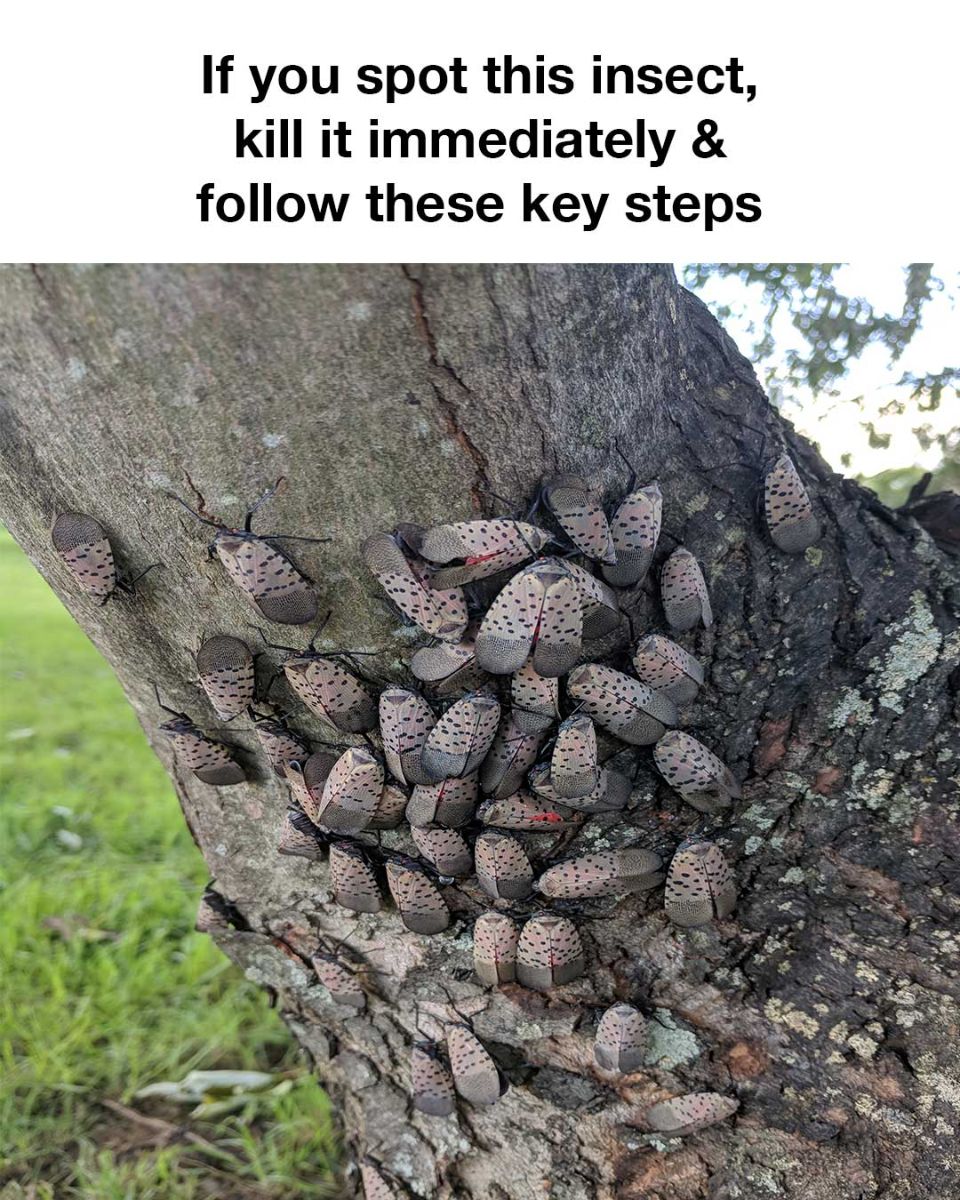For nymphs and adults: Use your hand or a small object to crush the insects. Be sure to wear gloves as they can leave a residue that might irritate your skin.
For egg masses: Scrape them off the surfaces they are attached to (like tree trunks, stones, or any outdoor furniture), into a bag filled with hand sanitizer or rubbing alcohol. This method ensures that the eggs will not survive.
Sticky Bands:
Wrap tree trunks with sticky bands to trap nymphs and adults. This prevents them from climbing to the branches to feed and lay eggs. However, these bands can also inadvertently catch birds and other wildlife, so it’s crucial to cover them with a protective cage or mesh.
Use Insecticides:
Insecticidal soaps, neem oil, or more robust chemicals can be effective in controlling lanternfly populations. Always follow the label instructions and consider environmental impacts before spraying insecticides, especially near food crops or water sources.
Report Sightings:
If you’re in a state where the lanternfly is considered an invasive pest, report any sightings to your local Department of Agriculture or cooperative extension service. They can provide further instructions based on the infestation level and area.

